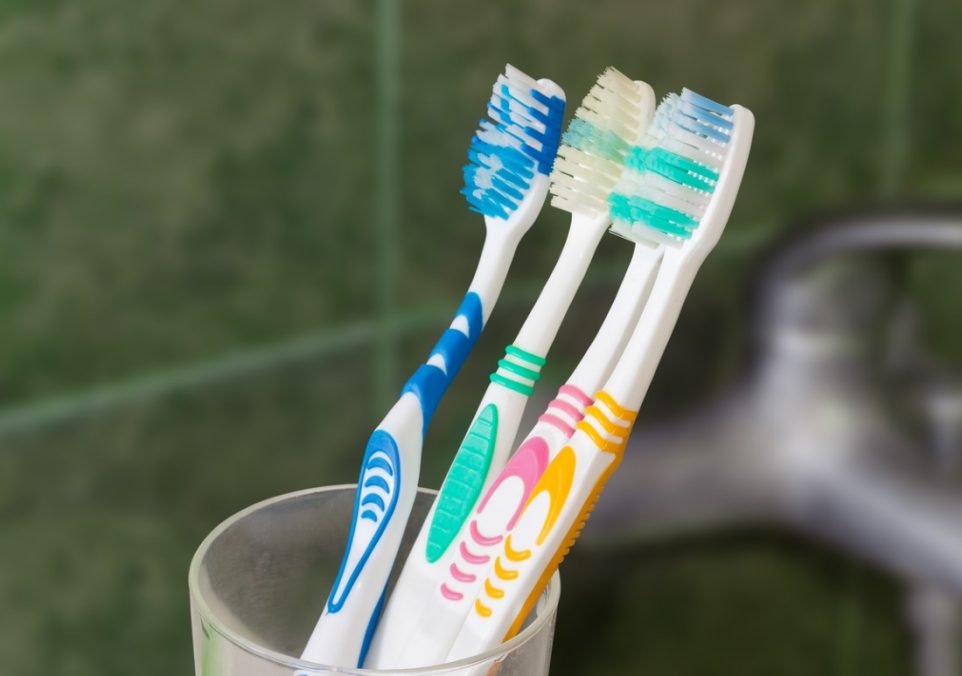How Often Should You Replace Your Toothbrush? Here’s What Dentists Say

Maintaining a healthy, radiant smile is a goal cherished by many, and it all begins with the simple act of brushing your teeth. Yet, while we diligently scrub away, the often-overlooked question remains: how often should you replace your toothbrush? The answer may surprise you. Your toothbrush isn’t a timeless companion—it has a finite lifespan. Dentists worldwide agree that regularly changing your toothbrush is essential for optimal oral hygiene.
According to the American Dental Association (ADA), the recommended timeframe for replacing your toothbrush or toothbrush head is every three to four months. This crucial practice takes both the efficacy of your toothbrush and the need to prevent harmful bacteria buildup into account. This blog will delve into the reasons behind this recommendation and explore some special considerations. So, if you’re keen on preserving that winning smile, stay with us to discover insights from dental experts regarding the frequency of toothbrush replacement.
The Basics of Toothbrush Replacement
Dentists worldwide concur that regularly replacing your toothbrush is crucial. The American Dental Association (ADA) recommends changing your toothbrush or toothbrush head every three to four months. This timeframe aligns with the average lifespan of a toothbrush before its bristles become frayed and less effective. Here are some reasons behind this recommendation:
1. Bristle Wear and Tear
Over time, the bristles on your toothbrush start to fray and bend. This makes them less effective at removing plaque and debris from your teeth and gums. Using a worn toothbrush can lead to inadequate cleaning, risking your dental health.
2. Bacterial Buildup
Another significant concern is the accumulation of bacteria on your toothbrush. Every time you brush, your toothbrush collects not only toothpaste and food particles but also harmful bacteria from your mouth. With time, these bacteria can multiply and contaminate your toothbrush, posing a risk of reinfection.
3. Reduced Cleaning Power
As your toothbrush ages, it loses its ability to clean effectively. The bristles become less rigid, and their cleaning action diminishes. This can result in plaque buildup, cavities, and gum disease. A fresh toothbrush or toothbrush head ensures optimal cleaning performance.
4. Preventing Cross-Contamination
If you or someone in your household has been sick, replacing your toothbrush is especially important to prevent cross-contamination. The germs from an illness can linger on the bristles and potentially reinfect you.
Special Considerations
While the standard guideline is to replace your toothbrush every three to four months, there are some exceptions and special considerations to keep in mind:
1. Hard vs. Soft Bristles
The type of toothbrush you use also affects when you should replace it. Soft-bristle toothbrushes tend to wear out faster than hard-bristle ones. So, if you’re using a soft-bristle toothbrush, you might need to replace it closer to the three-month mark.
2. Electric Toothbrushes
If you use an electric toothbrush, you might not need to replace the entire device as frequently. Most electric toothbrushes allow you to replace just the toothbrush head. Follow the manufacturer’s recommendations for when to change the head, usually every three to four months.
3. Children’s Toothbrushes
Kids’ toothbrushes may wear out more quickly due to the vigorous brushing habits of little ones. Parents should monitor their children’s toothbrushes and replace them as needed to ensure effective cleaning.
4. Dental Issues
If you’ve had dental work done, like a root canal, gum surgery, or orthodontic work, your dentist might recommend more frequent toothbrush replacement to minimize the risk of infection and maintain optimal oral health.
5. Visual Inspection
In addition to the three to four-month guideline, you should also visually inspect your toothbrush regularly. If the bristles appear frayed, bent, or otherwise damaged before the recommended replacement time, it’s a sign that you should replace it sooner.
Eco-Friendly Toothbrushes
As the world becomes increasingly conscious of environmental sustainability, many people are turning to eco-friendly toothbrush options. These are typically made from biodegradable materials, reducing their environmental impact. However, eco-friendly toothbrushes may have a shorter lifespan than traditional plastic ones. If you’re using an eco-friendly toothbrush, you may need to replace it more frequently to maintain your oral health.
Final Thoughts
Maintaining good oral hygiene is not just about brushing your teeth; it’s also about using the right tools and knowing when to replace them. Regularly replacing your toothbrush, or toothbrush head in the case of electric toothbrushes, is essential to ensure effective cleaning and prevent bacterial contamination.
The three to four-month guideline recommended by dentists and the American Dental Association is a practical rule of thumb, but you should also consider individual factors such as the type of toothbrush you use and any special dental issues. Remember, a fresh toothbrush ensures better oral health and contributes to your overall well-being. So, the next time you’re shopping for dental supplies, don’t forget to pick up a new toothbrush and mark your calendar for the next replacement.
Elevating the Shopping Game
Our platform offers in-depth reviews and analyses across various product categories, empowering you to shop with confidence and precision. Here, transparency and detailed research pave the way for smart choices that reflect your needs and values. Join our community and elevate your shopping experience from buyer to expert, one report at a time.